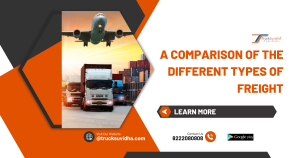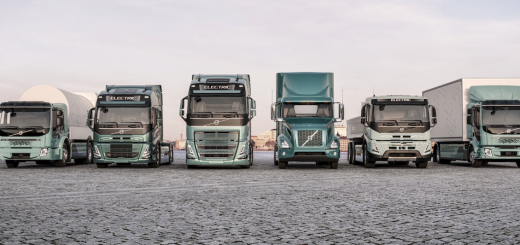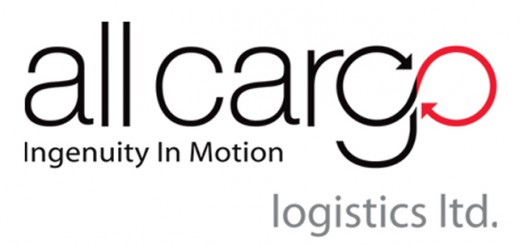A Comparison of the Different Types of Freight
The mode of transportation is a key consideration when planning the cargo procedure. The mode of transportation should get selected after taking costs, urgency of the shipment, value of the delivered goods, as well as the goods’ size and weight, into account.
Water, earth, and air are not only three of the four basic elements, but also the physical building blocks for all modes of freight transportation, whether by sea, land or air. In order to guarantee that your goods reach swiftly and securely, we have listed the various forms of freight and modes of transportation here. We also explain which type of freight or which mode of transportation is particularly ideal for each route.
Shipping and Route Choose a suitable mode of freight transportation.
No matter the kind of cargo—combustible liquids and gases, perishable foods, or insensitive dry material like gravel or sand—each has certain requirements that must be always taken into account when choosing the means of transportation. Speed is crucial when dealing with perishable items or things that are in high demand. On the other hand, freight capacity is the most crucial factor for big, very heavy, or bulky products.
Key Considerations Choosing the Type of Freight
Among the factors determining the type of goods are:
- Shipping route (total length and characteristics)
- Necessary transport speed (perishable goods, short delivery time, etc.)
- Features of the cargo (fragility, weight, volume, etc.)
Benefits and Drawbacks of Different Freight: A Quick Summary
There isn’t always only one technique to carry a certain kind of goods. Trucks and trains are the two options for land goods transportation. As a result, the definition of the type of goods in this instance is more expansive than that of the mode of transportation.

Land Freight: Road Freight
Road freight is the movement of goods by means of a road network. Semi-trailer trucks, special vehicles for frozen or dangerous commodities, or tank trucks for gases and liquids are some examples of trucks that can get employed.
Benefits: Almost every business is usually linked to the road network. This enables door-to-door transport without the need for
transhipments. The road infrastructure, which is generally good in Europe, allows for quick and flexible transportation.
Drawbacks: Each truck has a limited transport capacity. When fossil fuels, pollutant emissions occur directly at the vehicle, and conurbation infrastructure is potentially overburdened.
Land Freight: Rail Freight
In rail freight, freight trains are usually used to convey cargo over the rail network. Special waggons make it possible to convey a variety of items, much like with road goods.
Benefits: Compared to road freight, the transport volume is larger. Moreover, disruptions occur less frequently in rail freight, and the items are then handled very securely. The large percentage of e-mobility in this industry has a favourable effect on the sustainability of the environment.
Disadvantages: The costs are higher than those for road goods transport. Because infrastructure is actually limited and most starting and ending points are not connected to the rail network, direct transport options are rare and time-consuming transshipments are frequently required.
Air Freight
The term “air freight” refers to the movement of cargo between airports by plane. On flights carrying passengers, additional cargo room may be set aside, or cargo-only aircraft may get employed.
Benefits: Whether travelling via land or water, even huge distances can be swiftly reached. For this reason, air freight is especially suitable for transporting items that need to be quickly delivered (and which are neither too heavy nor too bulky).
Drawbacks: Of all types of freight, air freight has the lowest carrying capabilities and the highest freight rates. The time benefit get lessened on short-haul routes because it is frequently necessary to offload into land freight vehicles at the airports. The ecobalance of aeroplanes is also subpar.
Sea Freight
Container ships and ships for bulk cargo like coal, earth, liquids, etc. are the two main types of ships used for shipping goods across the sea. On container ships, it is also possible to reserve just the space for a single container (Full Container Load, or FCL), or even simply partial capabilities inside a container, as opposed to the latter, which are frequently completely allocated for the transport of a full load of a single commodity (Less Than Full Container Load – LCL).
Benefits: For heavy or bulky items as well as large amounts of cargo, ships are the preferred mode of transportation. Intercontinental trade frequently has no other option. In many cases, shipping goods by sea is also the most economical choice.
Drawbacks: Long transport times are a drawback. The wait times at seaports can occasionally make these worse. Additionally, additional transportation by truck or rail is necessary for sea freight shipments.
Conclusion
The situation will frequently determine the kind of freight transport you use. But if you decide that land freight is a viable and appealing option, a capable partner can assist you in getting your cargo to its destination as quickly, effectively, securely, and sustainably as you can.
Visit Trucksuvidha.com now!!




Recent Comments